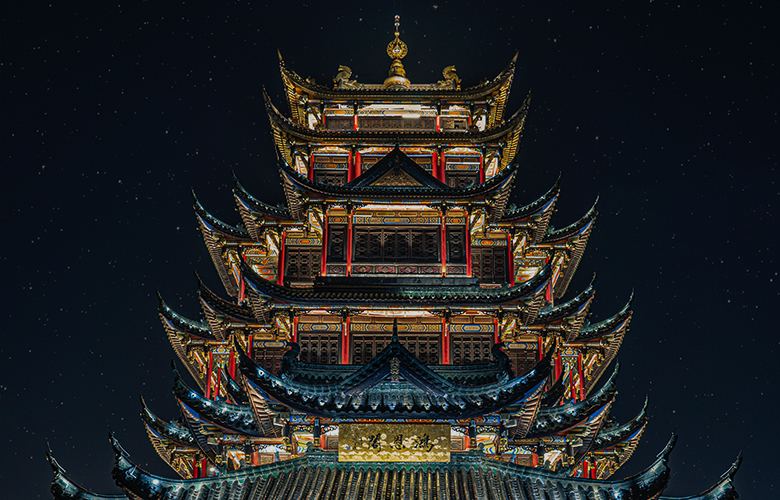
The COVID-19 pandemic has reshaped the world of theatre completely in a new way. Regardless of the recovery of live performance industry in the western world, more and more people, especially commercial workers, start to realize that theatre cannot and will not go back to the old days. This is our post pandemic world. Facing numerous challenges in domestic markets, show makers may need a vision shift — the life-saving straw may lie on the other side of the globe. From various points of view, China is the most promising market for commercial musical companies to recover from the pandemic shock.
First of all, the general environment for public health in China is stable enough for big scale live performances like Broadway or West End musicals. Ironically, the origin of the killing virus had managed to keep the disease under control when everywhere else in the world was still in chaos. Dating back to July 2020, theatre industry in China had already been up and running. Although remaining limited capacity for a long time, most of the movie theaters and live performance venues opened up to receive local shows and a great amount of audiences. Up until now (April 2021), alongside the roll out of vaccination, a lot of cities have completely lifted up the limitation on live performances. Venues are allowed to sell tickets at full capacity. However, due to the uncertain situation in the other parts of the world, China has not fully opened its door to receive overseas performing companies yet. Most theatre productions are localized western productions or original ones. Nevertheless, the works created by the immature local system cannot satisfy the audience who have been fed by Broadway and West End feasts for the past few years.
Over the past few years, China has formed a huge market for musical performances, and it keeps showing the promising potential of growth which may help it to overpass the traditional western centers. In 2018, the market size of China’s live performance theatre industry is about 8 billion (Annual Performing Arts Market Report by China Association of Performing Arts), versus the U.S. is 6 billion (IRISWorld Industry Report), and China keeps growing. Based on the development model in mature western markets, China has an estimated market of 1 billion USD for just musical performances (Institute of Daolue Performing Arts Group). In that year, Super Vocal, an online variety show aiming to promote musical theatre and opera to the public, had created a social mania. The show expanded the audience demographic of theatre lovers to a much greater scope. The temperature of the market has been high since then.
Chinese audiences are crazy about western musicals performed in their original languages.
Immature as local productions are, those imported touring western musicals have dominated the market with distinguished advantages. Based on the 2018 Annual Report of Musical Industry by the Institute of Daolue Performing Arts Group, there were 22 imported foreign musicals that ran locally throughout the year, with almost the same model of touring. Musicals from Broadway and West End took a percentage of 53, 35% of them were from Germany, French and Austria, and the rest were from Japan, Korea and Spain. Imported touring western musicals in original language had a huge advantage in attendance over mandarin version productions or original ones. In 2018, the attendance of International touring productions of Cats, Chicago and Kinky Boots was equal to the attendance of all musical performances in 2017. With 584 performances around the year, the total box office income of imported touring western musicals was about 42.5 million USD with a growth rate of 146.6%, and it was 63.2% of the entire receipt of all musical performances in that year. The first five performances of Cats in Shenzhen (a first tier city near Hong Kong) were sold out in 72 hours of ticket release. The box office in Shanghai generated approximately $700,000 USD within the first 10 minutes (China Stage Connection). Cats had a ticket sale of more than 14 million USD from its 21-week engagement, which was the most profitable musical in that year and took up 35.3% of the annual receipt of the entire industry. It was followed by the International tour of Chicago and Kinky Boots with more than 4 million USD box office income each. Looking in a broader timeline, other noticeable financial records are created by the everlasting classic. In 2013, Phantom of the Opera earned a total box office of approximately $7 million USD for a 64 performances run in China (China Stage Connection), however, they earned $17 million USD when they returned in 2015 for a 2-month run in Beijing and Guangzhou, which contributed to almost 1/2 of the entire box office income for all performances in China in that year.
In response to the national strategy of culture development, many second, even third tier cities have built theaters that match the standard of a Broadway house in recent years. The biggest domestic theatre management company, Poly Theatre Group, has over 60 theaters in 50+ cities, more than 20 provinces all over the country. It has over 123,000 audience seats in total, with an average theater capacity of 2000 (Poly Theatre Group). Since 2008, numerous big touring western musical productions have performed in China, such as Phantom of the Opera, Cats, Chicago, West Side Story, Kinky Boots, Wicked and Matilda. The international touring company of The Lion King was supposed to visit Beijing and Wuhan for a five months engagement in 2020 as well. In some cities like Beijing or Shanghai, there are even multiple equivalent theaters that allow shows to be played at the same time. For example, the international tours of Cats and Kinky Boots played at the same time in Shanghai in 2018; the international tours of Evita, Titanic and Matilda played at the same time in Beijing in 2019. These have proved that China has the ability to host these huge productions that may not be possible to do elsewhere because of technical difficulties.
Given the astonishing data above, western theatre workers may still feel hesitant when thinking about sending shows to China.
As only limited resources of the market can be found throughout the western media system, the huge market leaves an impression on people as “unpredictable”. Frankly, due to distinguished differences that lie in western and eastern culture, a show that can be well received in a successful commercial model in China can be very different from what has been mastered by the western veterans for years. However, with correct directions of investigation and local resources, it is not impossible to find the tricks to please this oriental giant. In the time now that the traditional theatre industry is both reshaped internally and externally, the rising influencers should be prepared to shift a big part of their focus to the other side of the world.
Why The Chinese Don’t Like Simba to Speak Mandarin


Zhangqiyu (Ada) Zhang is a Chinese theatre maker based in New York City. She holds an M.F.A. in Stage Management from Columbia University. Ada has worked on multiple western imported musical tours in China as stage manager, company manager and interpreter, such as Kinky Boots, Matilda, Wicked, Bodyguard, etc.
Read Full Profile© 2021 TheatreArtLife. All rights reserved.

Thank you so much for reading, but you have now reached your free article limit for this month.
Our contributors are currently writing more articles for you to enjoy.
To keep reading, all you have to do is become a subscriber and then you can read unlimited articles anytime.
Your investment will help us continue to ignite connections across the globe in live entertainment and build this community for industry professionals.